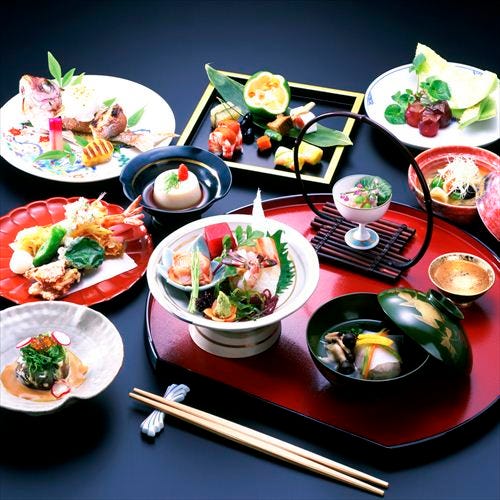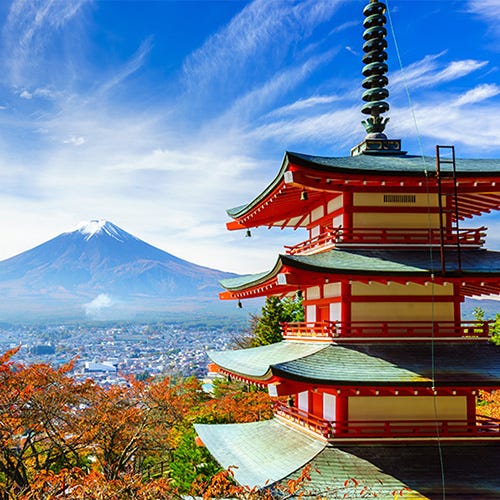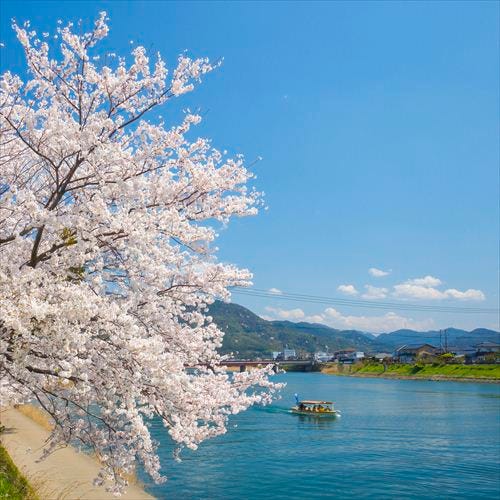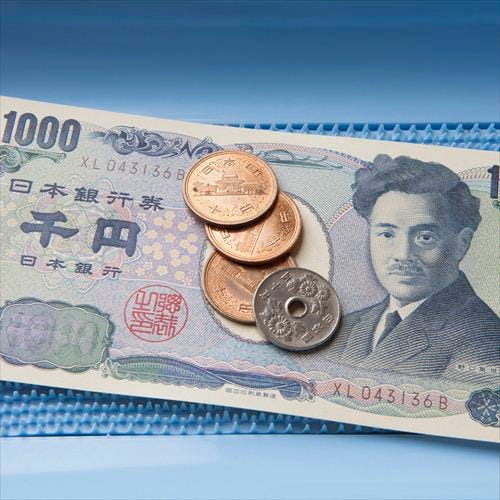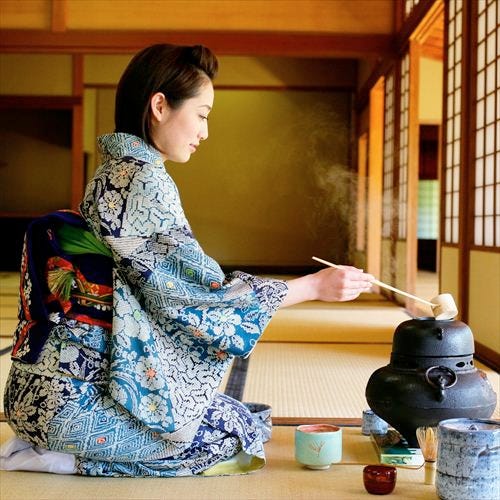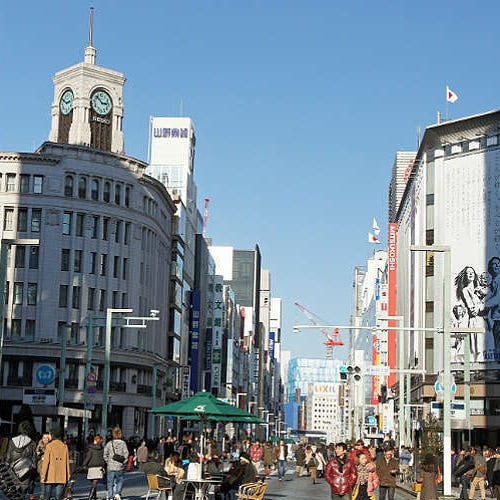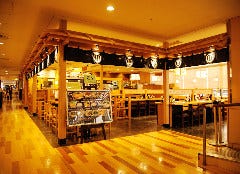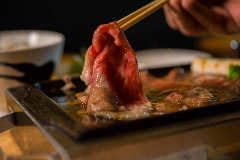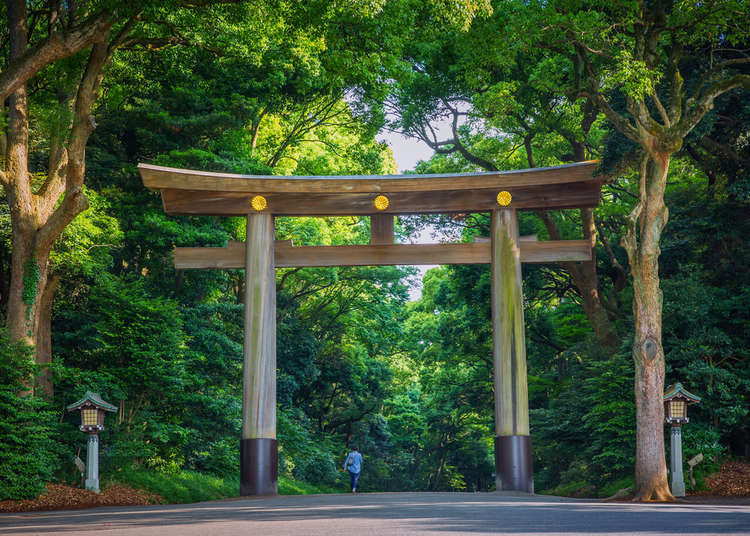
Every year, Meiji Shrine has the largest number of worshipers in Japan gather for hatsumode, the first shrine visit of the New Year. Some 3,000 species of plants and animals currently inhabit the dense forest that grows on the expansive 700,000 square meter wide shrine grounds.
You might be in the heart of Tokyo - but here, only the chirping of birds and the sound of the wind rustling the leaves can be heard. Follow along as we explore this scenic spiritual space!
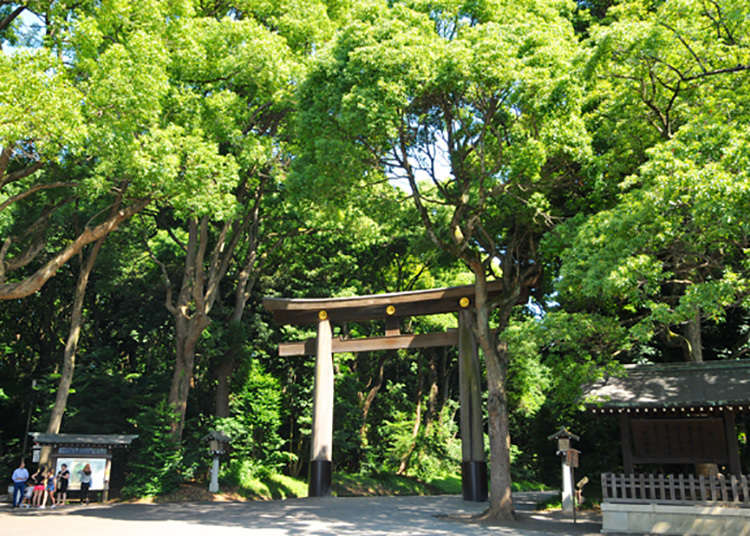
Meiji Shrine is a sacred place built in 1920 and dedicated to Emperor Meiji and Empress Dowager Shoken. Different from its current state, it is said that it used to be wilderness at the time of its construction, so people planted around 100,000 trees that were donated from all over Japan. This created a chinju-no-mori, the forest kept and protected around Shinto shrines. Once you head toward Meiji Shrine from Harajuku Station, the first thing that comes into view is the first torii, or shrine gate. The main shrine is still a short walk away. Bow once in front of the torii, then let's enter inside.
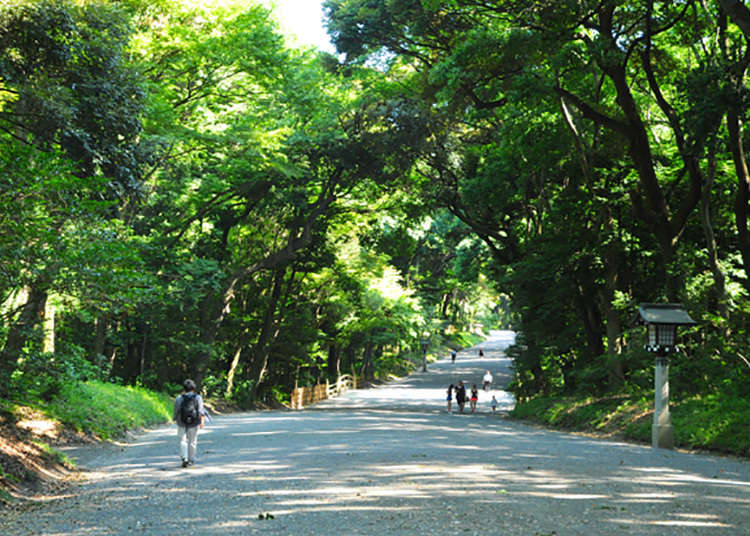
A step inside the sacred place naturally pulls one's mind together. The path slopes gently downhill. It is said it was designed as a downward slope to enable visitors to comfortably worship at the shrine. Upon stepping forward firmly on the gravel, the air will feel nice and cool. The sound of the gravel being stepped on is said to have a purifying effect on visitors, and just by walking along making gentle sounds, the pleasant crunching brings peace to one's mind as well.

What comes into view next is the sake barrels and the wine barrels. Emperor Meiji is said to have had a taste for wine, especially the ones made in Burgundy. The barrels stacked in rows are an intriguing sight.
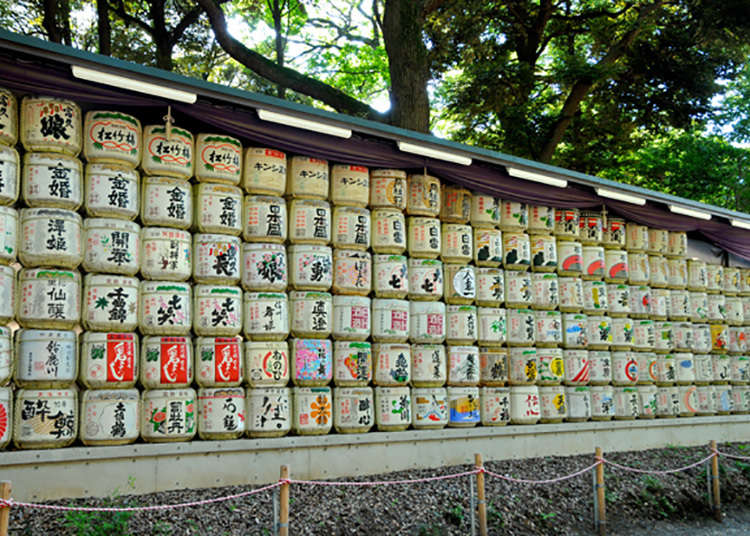
Here are the Japanese sake barrels. If you have an eye for wine and sake, try looking at the caskets and distinguish the different brands from one another.
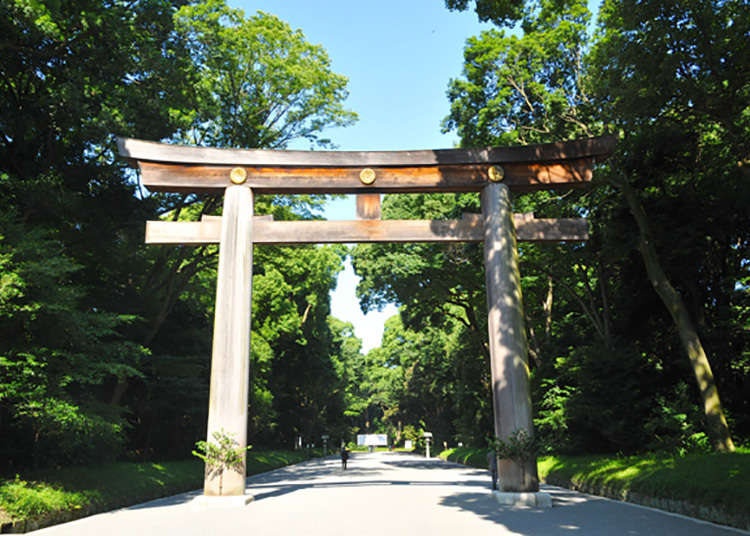
Ahead, the o-torii (great torii) appears on the left and is the largest wooden Myojin-style torii in Japan. One pillar is said to have been made from a single entire Taiwan cypress tree.
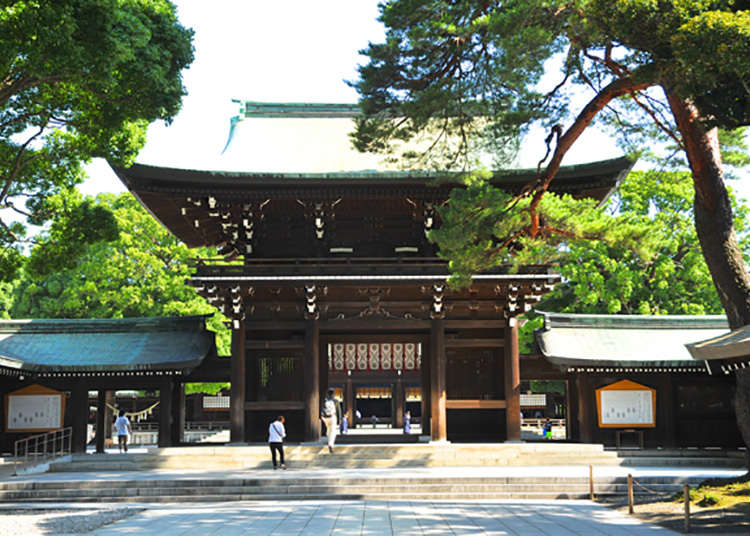
Upon passing through the great torii, you will finally arrive at the main shrine building. From here it is an especially sacred place.
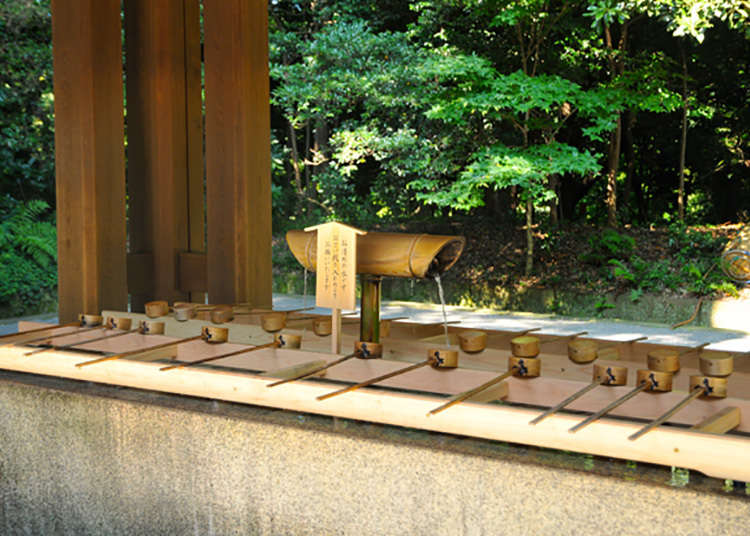
Before paying respects, let's purify our body with temizu, Shinto water for a ceremonial purification rite. The way to do this is to first use your right hand to scoop the water with a hishaku (ladle) and rinse your left hand. Then, put the ladle in your left hand and rinse your right hand. After that, put the ladle back in your right hand and pour some water onto the palm of your left hand, then rinse your mouth with that water. Finally, after you have finished rinsing your mouth, rinse your left hand once more, allow some water to run down the handle of the hishaku, and return it to its original place.

Put some coins into the donation box, then comes the time for "2 bows 2 claps 1 bow". Bow twice, clap your hands twice, and then after you've made a wish, bow once at the end. It is better to practice beforehand in order to perform it smoothly.
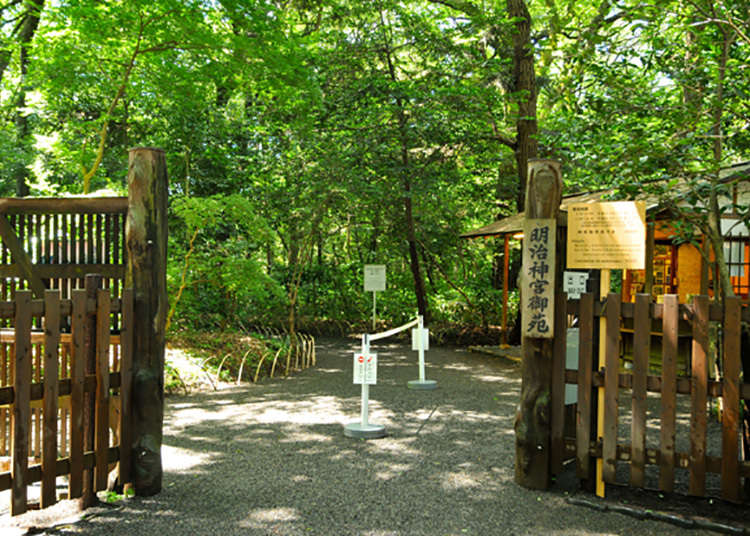
After your visit to the shrine is complete, we go to the Meiji Jingu Gardens. According to the description, this imperial garden used to be the garden of a shimo-yashiki (a villa located outside of central Edo) owned by the Kato clan and the Ii clan since the early Edo period. However, It fell under the jurisdiction of the Ministry of the Imperial Household in the Meiji period and it appears it was given the name Yoyogi Gyoen. Currently, it is called Meiji Jingu Gardens. This place has been a garden since long ago, but in the Meiji period, it was maintained by Emperor Meiji for Empress Shoken to be able to take walks. It is a place that gives off an impression of native thickets, and even the atmosphere of the path is a little different from others, with its natural trees which will welcome you refreshingly.

We've found Kiyomasa-no-Ido (Kiyomasa's well) which became famous through Japanese TV! You can touch the pure spring. The water temperature is around 15 degrees Celsius throughout the year with the water gushing out at 60 liters per minute. It is cool and feels nice. The well is said to promise a good fortune, yet no coins are allowed to be tossed in, as this would defile the clean water.

Walking the path of thickly grown trees, the view suddenly opens and the shobuta (Japanese iris field) appears. Here is the place where Emperor Meiji had irises planted for Empress Shoken. The irises start to blossom in June, which naturally is the best time to see the various species of colorful irises in full bloom. During this time, it is said to create such a beautiful scene that people forget that they're in the middle of Harajuku and Shibuya.
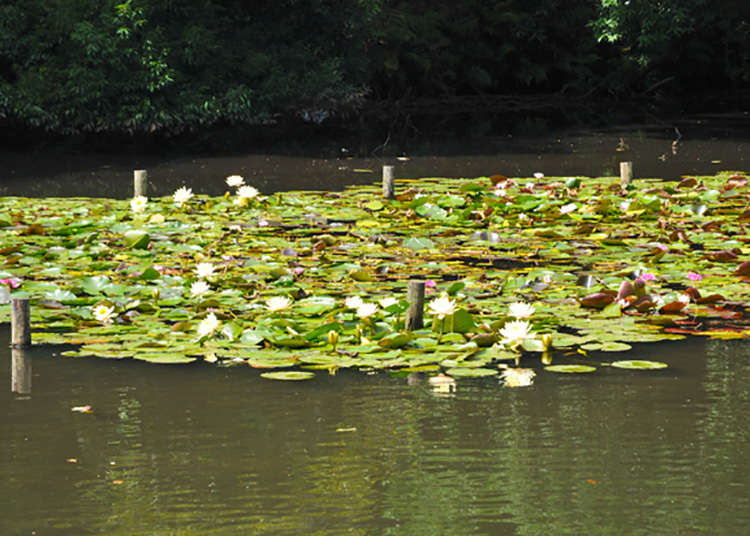
At the lake in the imperial garden, there are of course koi, but depending on the season, wild birds such as mallards, mandarin ducks, and meadow buntings can be found as well. In the summer, beautifully blooming sacred lotus flowers can be seen.

Around the time you reach the front of the Treasure Museum, our field of vision opens, and a spacious lawn! The skyscrapers of Shinjuku stretch out towards the vast sky in the background. When you get tired of walking, enter the shade of a tree and take a short break there. Feel the refreshing wind while resting on the lawn, and perhaps the power of chinji-no-mori will swell within you! By the way, it should be noted that including this place, eating and drinking inside the shrine is not allowed, except for some specified locations.
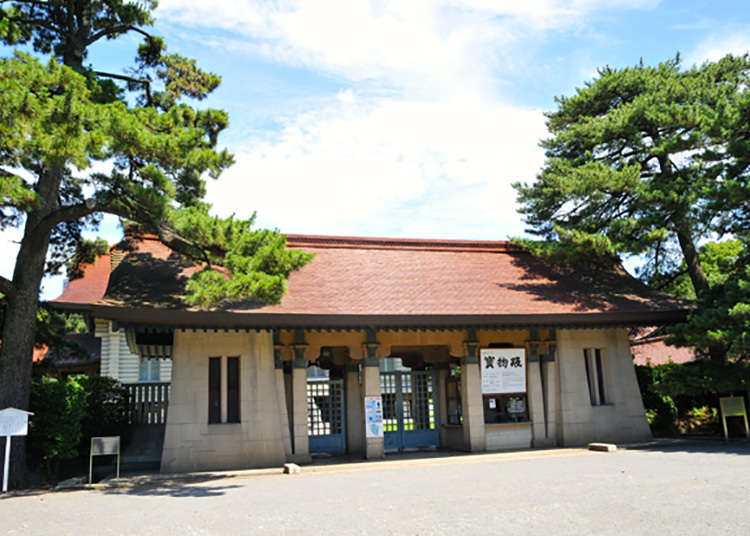
We've arrived at the entrance of the Treasure Museum. Inside, the portraits of Emperor Meiji and Empress Shoken are on display. Various items with deep connections to both deities of the shrine are exhibited as well.

In front of the Treasure Museum also stands the Sazare-Ishi, pebbles which grew into a large rock over time. They also appear in the national anthem "Kimigayo:" those little stones which came together by the river current have become one large stone such as this. It was dedicated to Meiji Shrine from its original place in Gifu.
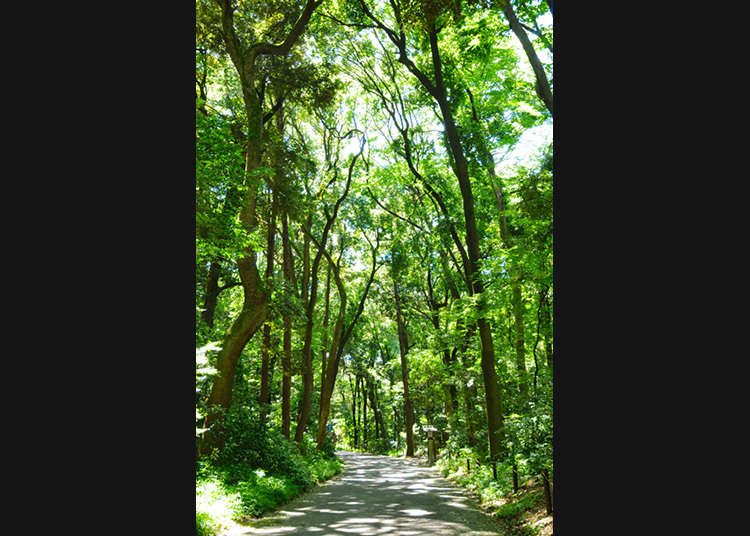
The way back towards Harajuku is surrounded by tall overgrown trees which make for a cool, refreshing path. Although the sun is already high, the tree leaves moderately block the sunlight and cast beautiful shadows over the forest.
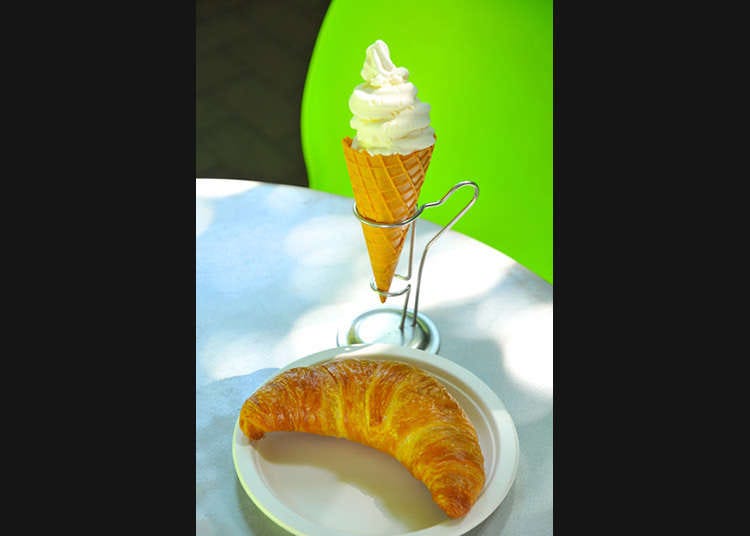
After a fulfilling walk of the grounds, its time to go back to the entrance to have tea time at the cafe Mori no Terrace. In warm seasons, relaxing on the open terrace with its carefree atmosphere is recommended. Menu items such as tofu-milk ice cream and croissants are popular at the cafe. After satisfying your appetite and quenching your thirst, remind yourself of the sights you saw or things you felt while walking. There must have been a variety of discoveries and surprises.
-
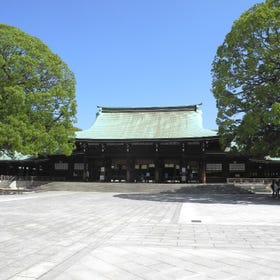
-
Address
1-1, Yoyogikamizonocho, Shibuya-ku, Tokyo, 151-8557
View Map -
Nearest Station
Sangubashi Station (Odakyu Odawara Line)
- Phone Number 03-3379-5511
-
Address
1-1, Yoyogikamizonocho, Shibuya-ku, Tokyo, 151-8557
-
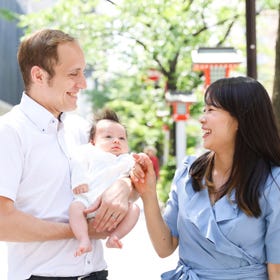 Personal Photographer~ Meiji Shrine Tokyo~Personal Photographer~ Meiji Shrine Tokyo~
Personal Photographer~ Meiji Shrine Tokyo~Personal Photographer~ Meiji Shrine Tokyo~-
Address
1-11-8 Sakuragaoka, Setagaya-ku, Tokyo, 156-0054
-
Nearest Station
Kyodo Station (Odakyu Odawara Line)
- Phone Number 090-9371-4499
-
Address
1-11-8 Sakuragaoka, Setagaya-ku, Tokyo, 156-0054
*Prices and options mentioned are subject to change.
*Unless stated otherwise, all prices include tax.
Limited time offer: 10% discount coupons available now!
-

Pop Culture Paradise: Find All Your Favorite Characters at Sunshine City in Ikebukuro
-

We eat fugu pufferfish semen at a Japanese restaurant in Tokyo
-
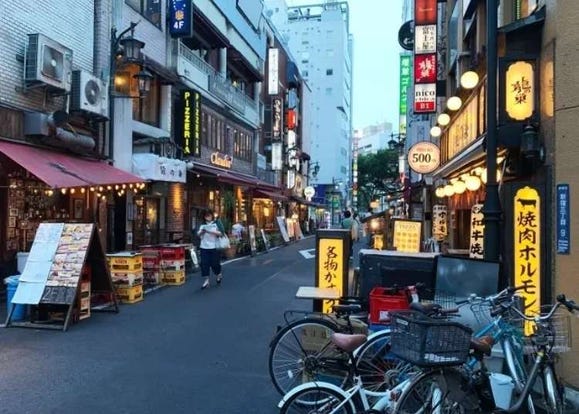
Japanese restaurant chain causes a stir with foreigners online, but is it any good?
-
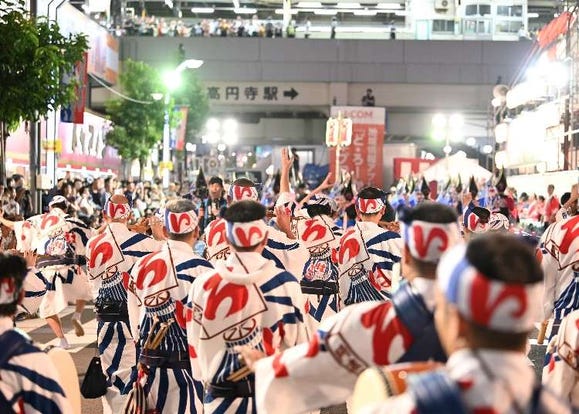
Things to Do in Tokyo in August 2023: Your Guide to Events, Summer Festivals, and Must-See Attractions
- #best ramen tokyo
- #what to buy in ameyoko
- #what to bring to japan
- #new years in tokyo
- #best izakaya shinjuku
- #things to do tokyo
- #japanese nail trends
- #what to do in odaiba
- #onsen tattoo friendly tokyo
- #daiso
- #best sushi ginza
- #japanese convenience store snacks
- #best yakiniku shibuya
- #japanese fashion culture
- #best japanese soft drinks
